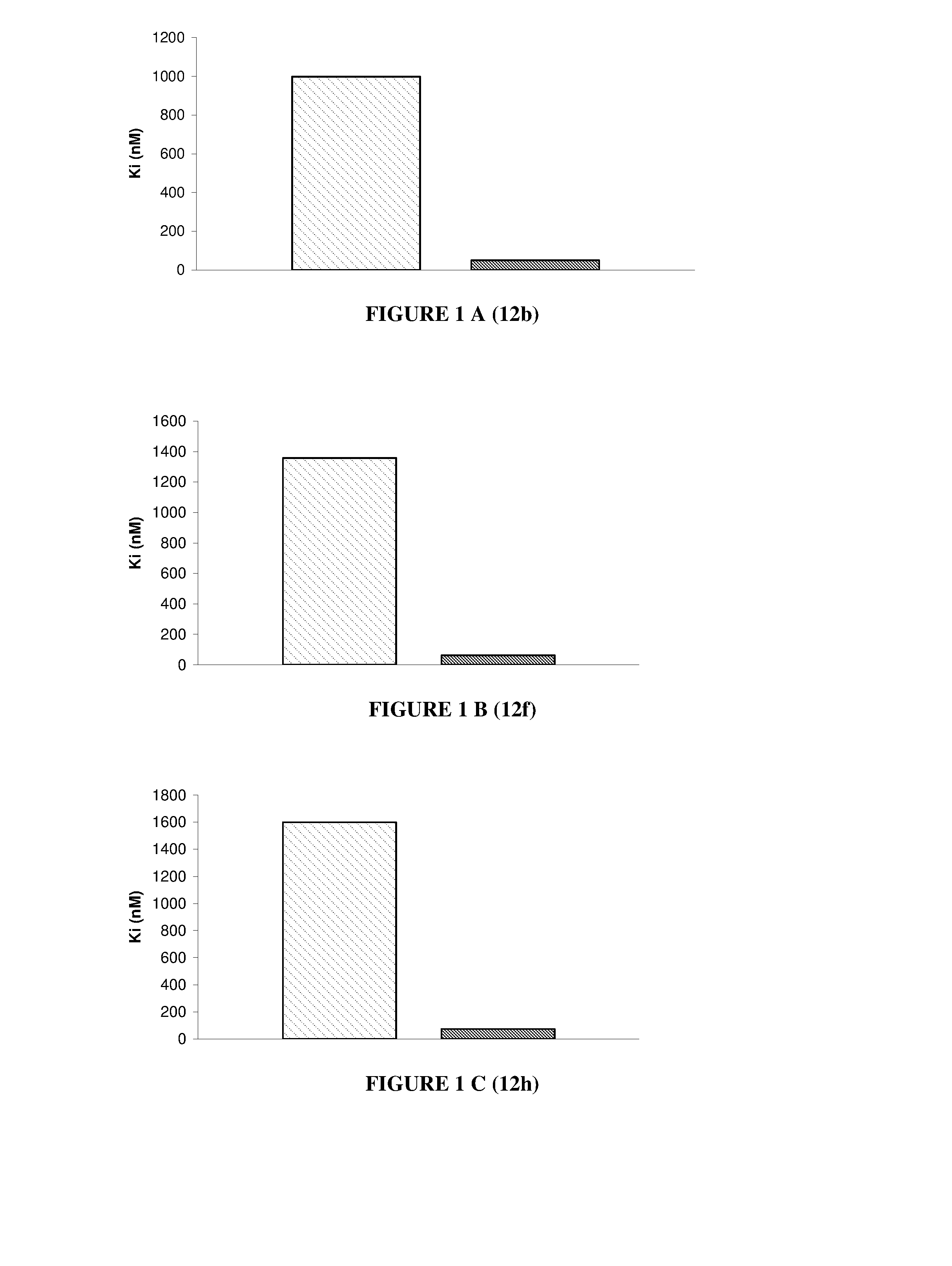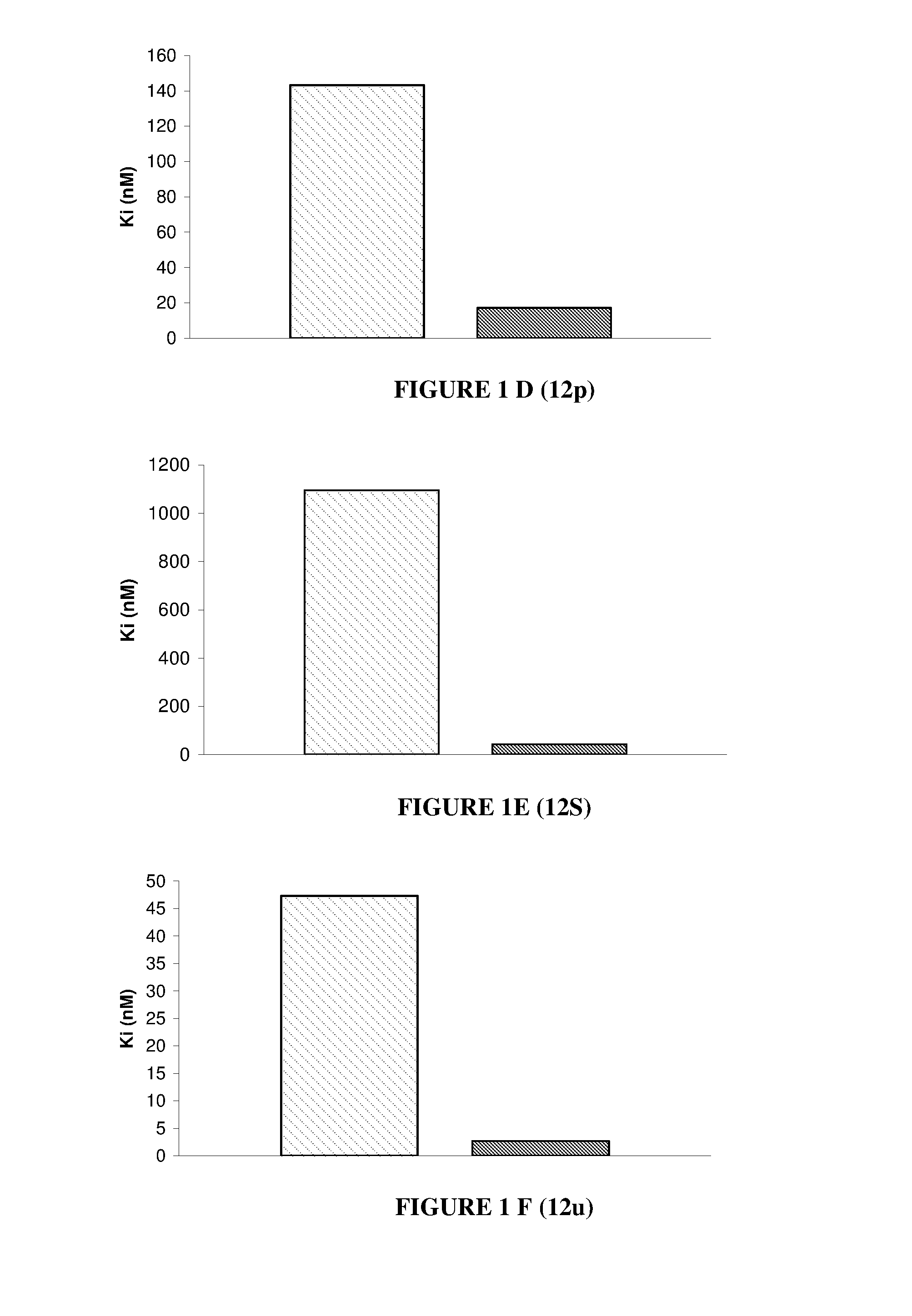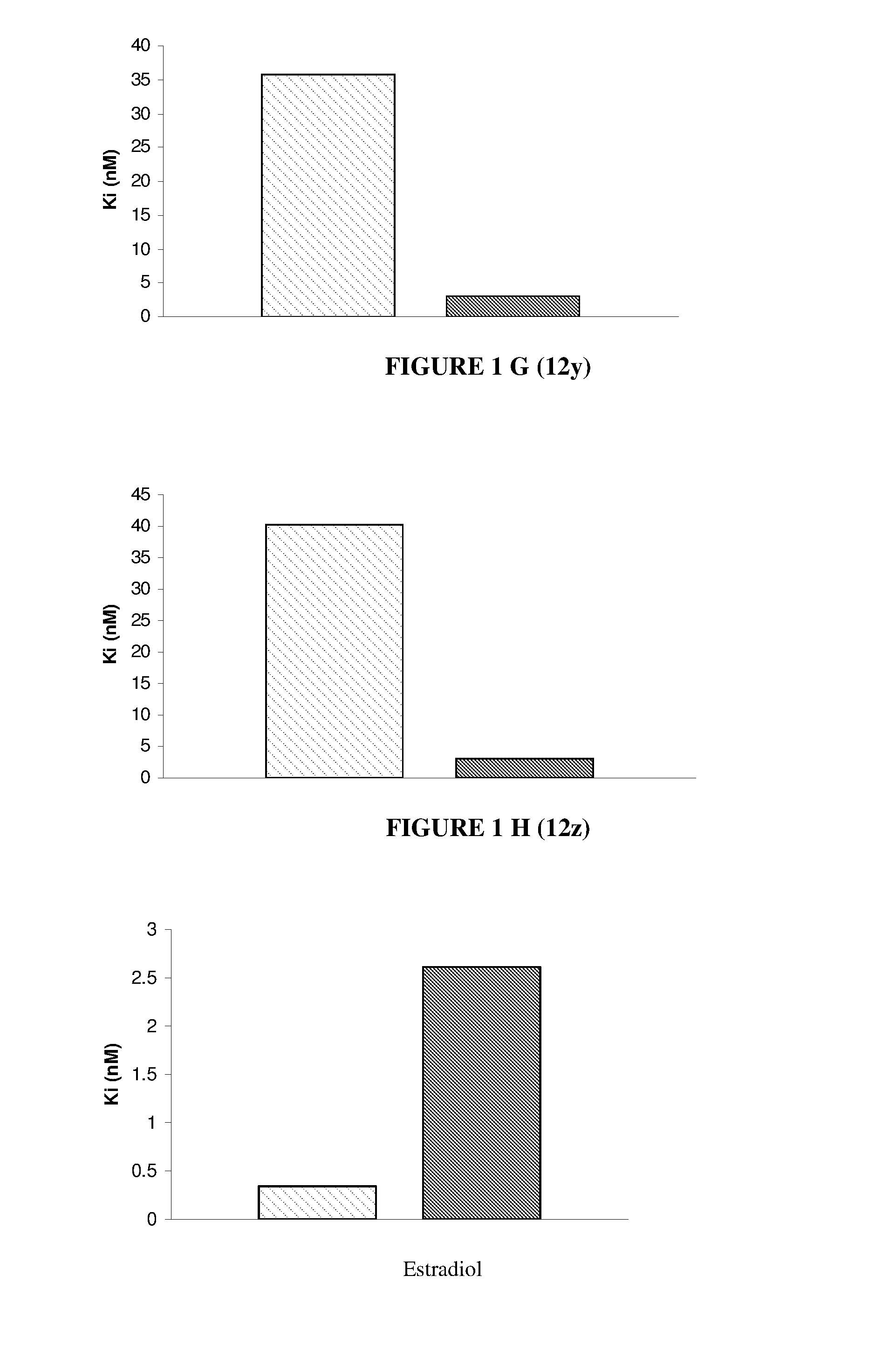Nuclear receptor binding agents
a technology of nuclear receptors and binding agents, applied in the field of nuclear receptor binding agents, can solve the problems of no effective pharmaceutical treatment for obesity pandemic problems, serious health risks and economic burdens to society, and the cost to the economy of $1.1 trillion or 6% of the us gross domestic product, so as to reduce the severity of fibrosis and the inciden
- Summary
- Abstract
- Description
- Claims
- Application Information
AI Technical Summary
Benefits of technology
Problems solved by technology
Method used
Image
Examples
example 1
Chemical synthesis of 4-bromo-6,8-dihydroxy-2-(4-hydroxyphenyl)isoquinolin-1(2H)-one (12u)
[0696]Scheme and procedures for synthesis of 12u.
Synthesis of 6,8-dimethoxyisoquinolin-1-ol
[0697]A mixture of trans-3,5-dimethoxycinnamic acid (15.30 g, 73.48 mmol) and thionyl chloride (13.11 g, 0.11 mol) were placed in a 250 mL single-necked round-bottomed flask fitted with a magnetic stirring bar and reflux condenser. Dry methylene chloride (80.0 mL) was added to the above mixture. The resulted solution was heated to reflux for 3 hours. Then, the solvent was removed under reduced pressure. The residue was dried under vacuum overnight to give a pale-yellow solid, trans-3,5-dimethoxycinnamic acid chloride.
[0698]The pale-yellow solid acid chloride was dissolved in 20 mL of 1,4-dioxane and added drop wise over 1 hour to a 0° C. suspension of 14.33 g (0.22 mol) of sodium azide in 80 mL of 1:1 (v / v) 1,4-dioxane / water. During the addition the temperature was maintained at 0° C. in an ice-bath. Afte...
example 2
Synthesis of 6,8-dihydroxy-2-(4-hydroxyphenyl)-1-oxo-1,2-dihydroisoquinoline-4-carbonitrile (14m)
[0705]Scheme and procedures for synthesis of 14m.
[0706]4-Bromo-6,8-dihydroxy-2-(4-hydroxyphenyl)isoquinolin-1(2H)-one (12u) (0.13 g, 0.37 mmol), Zn(CN)2 (53 mg, 0.45 mmol), tris(dibenzylideneacetone)dipalladium (34 mg, 0.037 mmol), and 1,1′-bis(diphenylphosphino)ferrocene (83 mg, 0.15 mmol) were placed in a dry and argon flushed 150 mL three-necked round-bottomed flask fitted with a stirring bar, reflux condenser and an argon inlet. Then, anhydrous dimethylformamide (10 mL) was added via a syringe under argon atmosphere. The reaction solution was stirred and heated to 100° C. for 12 hours. Water (20 mL) was added to quench the reaction. The mixture was extracted with ethyl acetate (2×25 mL). The extracts were combined, washed with brine (10 mL) and dried over anhydrous MgSO4 followed by filtration and concentration to give a yellow residue. The yellow residue was purified by flash column...
example 3
Synthesis of 4-chloro-6,8-dihydroxy-2-(4-hydroxyphenyl)isoquinolin-1(2H)-one (12y)
[0707]Scheme and procedures for synthesis of 12y.
Synthesis of 4-chloro-6-methoxy-2-(4-methoxyphenyl)-1-oxo-1,2-dihydroisoquinolin-8-yl-4-(trifluoromethyl)benzoate
[0708]Compound 6-methoxy-2-(4-methoxyphenyl)-1-oxo-1,2-dihydroisoquinolin-8-yl-4-(trifluoromethyl)benzoate (0.55 g, 1.17 mmol) and N-bromosuccinimide (0.19 g, 1.41 mmol) were placed in a dry, argon flushed 150 mL single-necked flask fitted with a stirring bar and sealed with a septa. Acetonitrile (15 mL) was added via a syringe at room temperature under argon atmosphere. After the mixture was stirred and heated to 60° C. for 8 hours, the solvent was removed under reduced pressure. The residue was purified by flash column chromatography (silica-gel, hexanes / EtOAc=7 / 3 v / v) to give a white solid product, 0.56 g, 94.9% yield. MS: m / z 526.2 [M+Na]+. 1H NMR (DMSO-d6, 300 MHz): δ 8.26 (d, 2H, J=8.1 Hz), 7.94 (d, 2H, J=8.4 Hz), 7.28 (d, 2H, J=8.7 Hz),...
PUM
| Property | Measurement | Unit |
|---|---|---|
| particle size | aaaaa | aaaaa |
| particle size | aaaaa | aaaaa |
| particle size | aaaaa | aaaaa |
Abstract
Description
Claims
Application Information
 Login to View More
Login to View More - R&D
- Intellectual Property
- Life Sciences
- Materials
- Tech Scout
- Unparalleled Data Quality
- Higher Quality Content
- 60% Fewer Hallucinations
Browse by: Latest US Patents, China's latest patents, Technical Efficacy Thesaurus, Application Domain, Technology Topic, Popular Technical Reports.
© 2025 PatSnap. All rights reserved.Legal|Privacy policy|Modern Slavery Act Transparency Statement|Sitemap|About US| Contact US: help@patsnap.com



